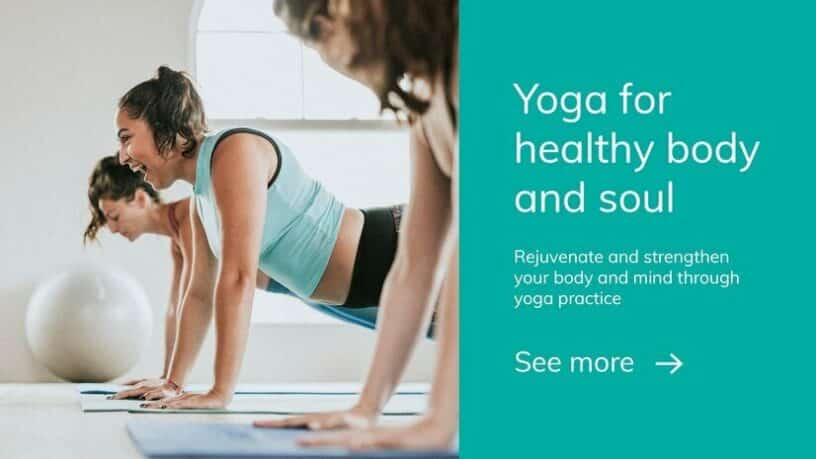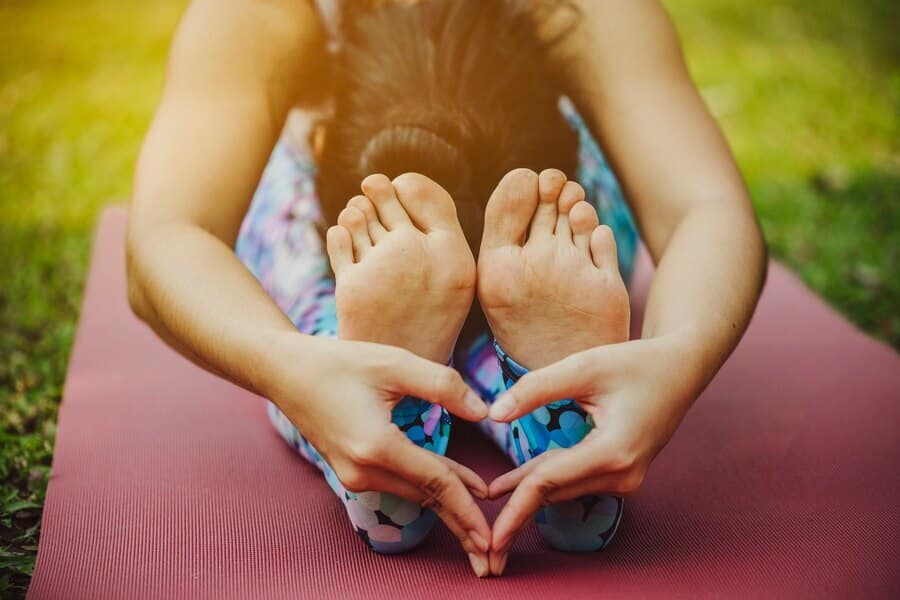
Yoga is one of the gentlest ways to care for your body. Practising yoga can prevent diseases as well as help manage them. One of the best examples of this is high blood pressure or hypertension. Yoga for high BP helps to maintain ideal blood pressure.
High BP is a dangerous condition. While you may not be able to detect its symptoms immediately, the long-term consequences of high blood pressure can be devastating. Heart attack, stroke, and even death can be repercussions of hypertension.
Usually, people take medication to manage high blood pressure. Adding yoga for high bp to your routine, however, can help you manage it even better.
What Is High Blood Pressure? And What Makes It Dangerous?
High blood pressure (abbreviated HBP), also called hypertension, occurs when the force of your blood pushing against the walls of your blood vessels is constantly high.
HBP is dangerous because it can damage your arteries by making your heart and blood vessels work harder and less efficiently. Over time, the force and friction of the blood against your artery walls can damage them. As a result, you’re susceptible to a heart attack, stroke, arrhythmia, or atherosclerosis.
8 Yoga Poses for High Blood Pressure
1. Padmasana (Lotus Pose)
The best way to ease your hypertension is to relax. The lotus pose is the perfect way to do just that. This pose helps calm your mind and brings your blood pressure to a normal level.
How To Do It?
Choose a calm and clean place for you to sit comfortably. Cross your legs and sit down. Keep your back straight and rest your hands on each other. Play soothing music or think about things that calm you or make you happy.
Practising this pose every day for 10 minutes will positively affect your blood pressure.

2. Shishuasana (Child’s Pose)
This yoga pose is one of the most basic exercises but is highly beneficial. It relaxes your shoulders, neck, and spine and can be easily done even by beginners.
How To Do It?
Find a comfortable spot and sit on your knees with your buttocks resting on your feet. Take a deep breath, stretch your arms and bend forward. Try to touch your forehead to the floor. Maintain this position for at least one minute for best results.
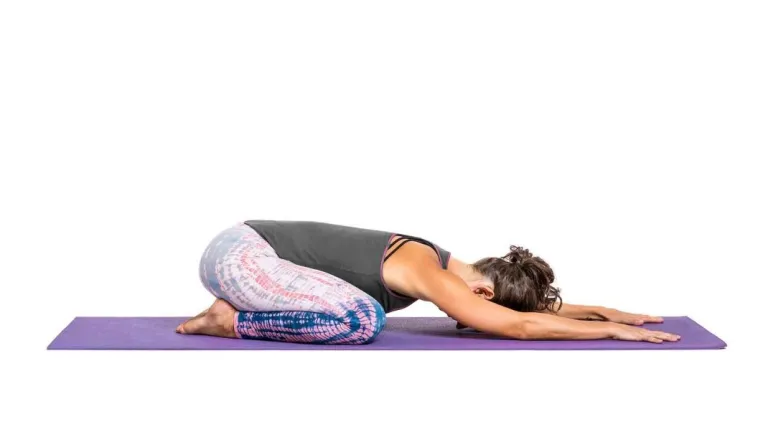
3. Bhujangasana (Cobra Pose)
Bhujangasana, also commonly known as the cobra pose, helps with blood circulation throughout the body. Good blood circulation translates to balanced blood pressure levels. This pose eases the muscles in your face, neck, spine, back, shoulders, and hands.
How To Do It?
Lie face down on your mat. Gently raise your shoulders and face. Rest your palms on the floor and take a deep breath. Continue breathing in and out and make yourself feel relaxed.
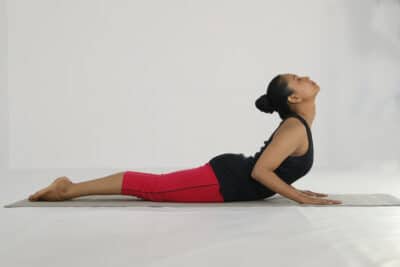
4. Dhanurasana (Bow Pose)
A simple extension of the bhujangasana is the dhanurasana or the bow pose. This pose is great for stretching your upper and lower body. Stretching is a great way to relax your body and bring your blood pressure under control.
This pose also strengthens your muscles and relieves you of any discomfort in your digestive system.
How To Do It?
Once you are in the bhujangasana, slowly lift your legs and bring your hands behind you. Now, hold your feet with your fingers and pull your legs towards your body. Don’t forget to keep breathing through the pose.
Hold this position for 20–30 seconds and relax. You’ll feel a rush of blood flow throughout your system that’ll relax you in no time.
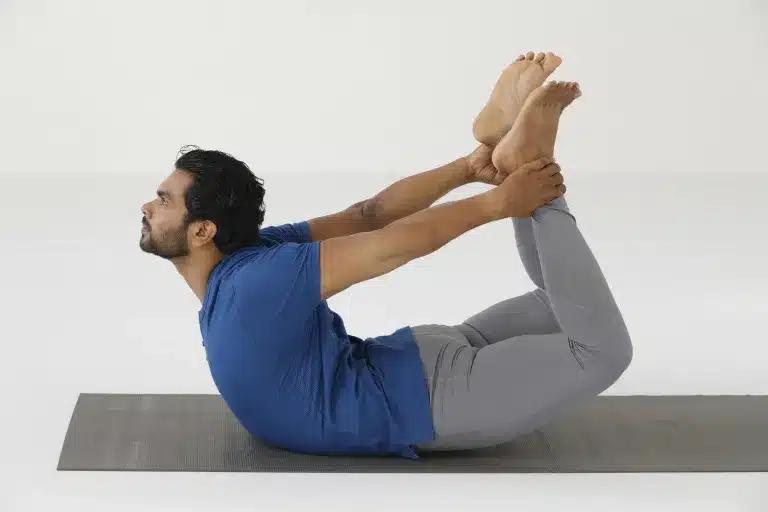
5. Adho Mukha Svanasana (Downward-Facing Dog Pose)
While this pose can seem challenging, don’t let the idea of hard work fool you into thinking this pose won’t lower your blood pressure.
This pose will help you build better balance and flexibility while strengthening your muscles and heart function. As a result, it improves circulation and lowers your blood pressure.
How To Do It?
To do this pose, kneel on the floor with a hip-width stance between your knees. Bend forward and place both hands on the floor, keeping them straight and under the shoulders. Next, step back with both feet while maintaining your arm and shoulder alignment. You should end up looking like the letter “A” or a hill on the floor. Hold the pose for five to ten breaths before going back to your original position.
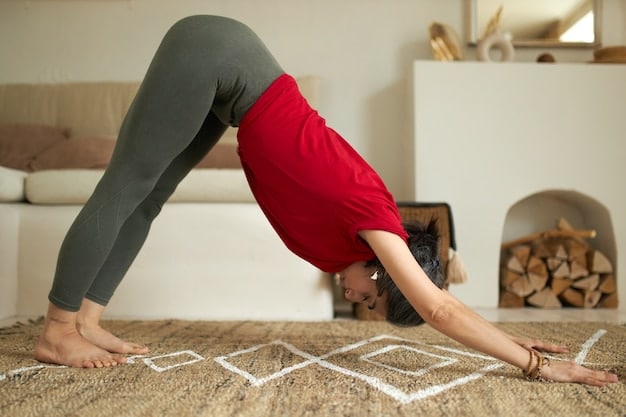
6. Vajrasana (Diamond Pose)
A common pose and starting point for many yoga poses, vajrasana is both simple and effective. This pose is known to improve sleep, calm your mind, strengthen muscles, regulate blood sugar levels, and treat hypertension.
How To Do It?
Kneel down. Keep your knees together and your feet slightly apart. Sit on your calves as close as possible, and make sure your back is straight. Stretch your arms forward and place them on your knees. Maintain this posture for two minutes.
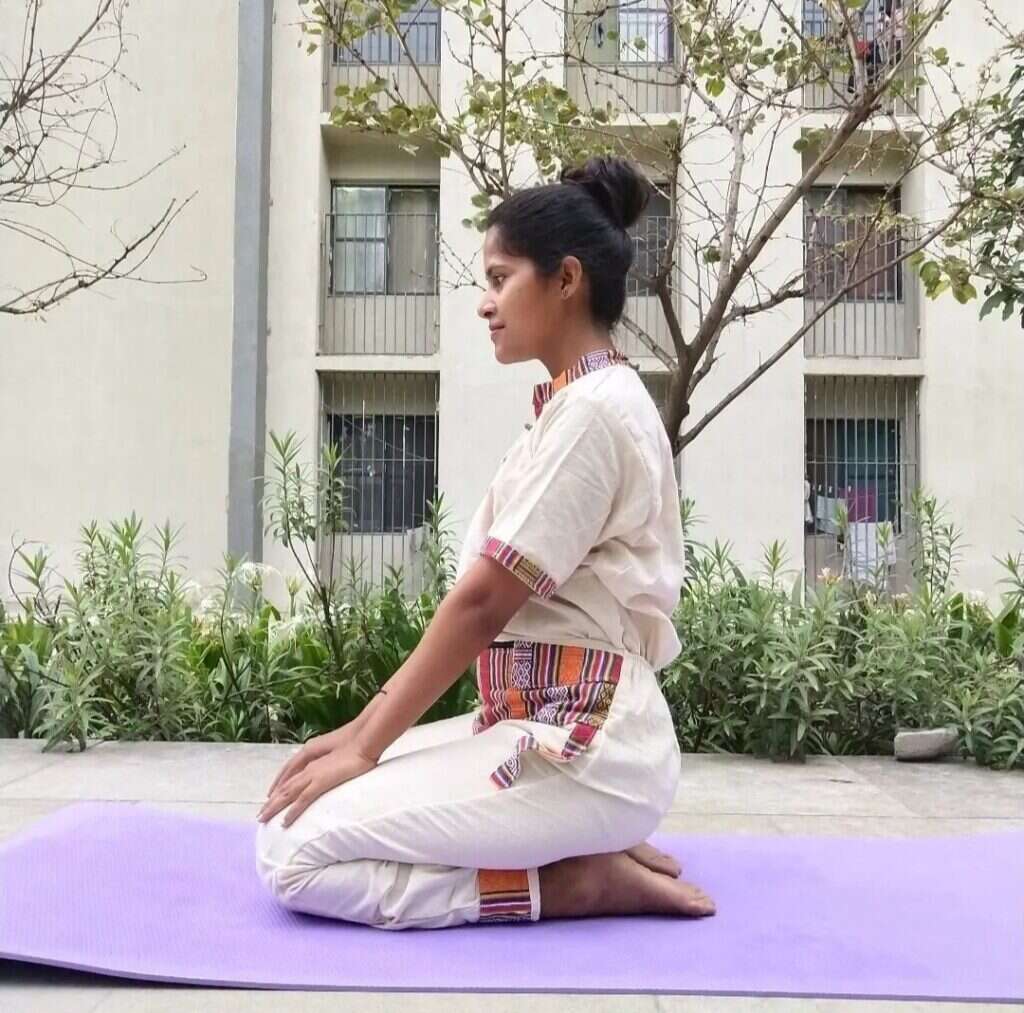
7. Shavasana (Corpse Pose)
Shavasana is a yoga pose usually done at the end of a yoga session — especially after a strenuous one — as a way to relax. You can’t get more relaxed than a corpse, which this pose mimics. This pose is known to eliminate feelings of tiredness and calms the mind.
How To Do It?
Simply lie on your back, with your legs spread as wide as the yoga mat. Keep both arms relaxed to both sides of the body. Close your eyes and focus on each breath, being aware of your chest and abdomen rising and falling.
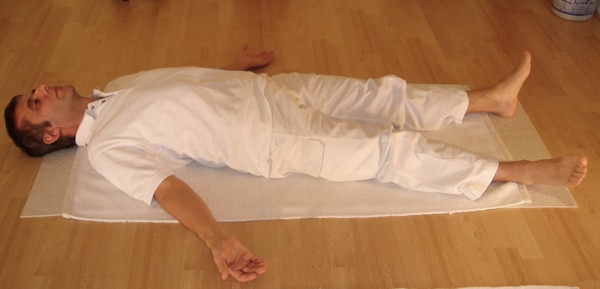
8. Pranayama
Pranayama is a breathing practice that’s done along with yoga. It is used to bring our breathing patterns under control which in turn helps in regulating blood pressure and various other conditions.
There are many types of pranayama, like slow breathing, fast breathing, breathing with force, breathing focused on exhale, deep breathing etc. Each of them has its own benefits. But, every breathing exercise you do, brings relaxation and calm to the mind and body.
How To Do It?
The best time to do this is early morning. This gives a great start to the day and boosts your energy to achieve much more than you usually do. Sit in the lotus pose and try out the different breathing exercises in a calm environment. Focus deeply and only on your breath to get the maximum benefit.

Yoga Asana Pointers
Here are some pointers to help you with these poses.
- Remember to breathe when performing these yoga moves. Holding your breath serves no purpose except to raise your heart rate.
- Work with a comfortable range of motion. You might not be flexible now, but try doing the poses as best as you can. They will get easier over time.
- If you’re pregnant and suffering from hypertension, yoga for high bp in pregnancy can benefit your health. Contrary to many myths, pregnancy isn’t an impediment to exercising. Go for asanas that put the least strain on your body should things get uncomfortable.
Practising these yoga poses for high bp can go a long way to relieving you of high blood pressure and its effects. Give them a try, and you will surely experience a change in your behaviour, attitude, stress level, and general state of health.
For individuals with high bp, yoga is one of the best ways to lead a healthy and peaceful life.
If you’d like to know more about the benefits of yoga and how it can alleviate your current ailments, visit AyuHealth’s website or contact us at +91 636-610-0800 to book an appointment with our healthcare professionals.
Our Hospital Locations
General Surgery Hospitals in Chandigarh | General Surgery Hospitals in Bangalore | General Surgery Hospitals in Jaipur | General Surgery Hospitals in NCR | General Surgery Hospitals in Hyderabad
Our Doctors
General Surgery Doctors in Chandigarh | General Surgery Doctors in Bangalore | General Surgery Doctors in Jaipur | General Surgery Doctors in NCR | General Surgery Doctors in Hyderabad
About the Author

Dr. S. Goel
Dr. S. Goel is a renowned Internal Medicine Specialist currently practicing at Ayu Health, Bangalore. He is a Specialist in Internal Medicine, Diabetes HTN, Paediatric Care, and Family Medicine.

